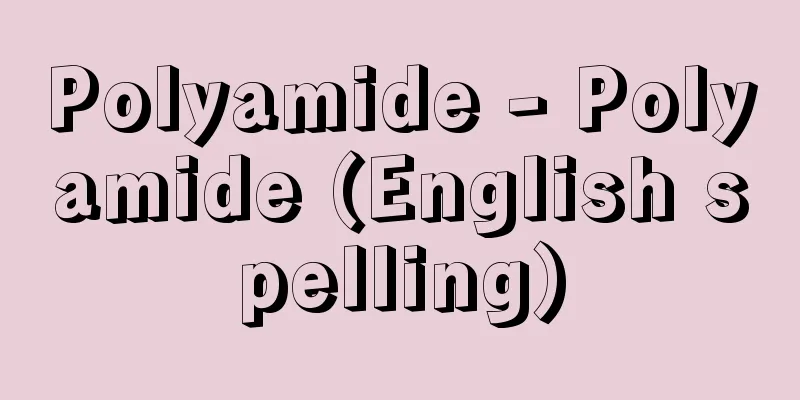Shiota - Enden

A rice field-like area made of sand, clay, etc., made to extract salt from seawater. In areas with little rainfall and strong sunlight, such as Africa, West Asia, Southeast Asia, and Central America, salt can be concentrated in salt fields using solar heat and wind to produce salt crystals. This is called solar salt production. In Japan, where the weather conditions are not favorable, seawater is concentrated to a certain extent in salt fields and then sent to the salt production process using heat. In the past, various types of salt fields were seen throughout the country in Japan, but since the early 17th century, most salt fields have been found along the Seto Inland Sea coast, and since the 1950s, most salt fields have been run-down type (run-down plate/branch rack method). In the run-down type, small gravel is laid on the surface of a gently sloping plate made of clay or polyvinyl chloride, and seawater is run over it several times to evaporate and concentrate it. Next, bamboo branches are hung in several rows at 1m intervals on a 5-7m tower called a shirasu, which is set up perpendicular to the wind direction, and seawater is allowed to fall like rain, concentrating it using the wind. This process is repeated to obtain concentrated brine with a salt content of 15-20%, which can be sent to the salt factory. However, this method is also expensive in terms of land rent, so in 1972 the ion exchange method was used, and salt production in salt fields in Japan disappeared. In major salt-producing areas such as Ako in the Seto Inland Sea, facilities have been built to introduce the techniques and processes used in salt production at that time. →Salt production→Related topics Ako Salt Fields | Ako Domain | Gyotoku Salt Fields | Takehara Salt Fields | Fuya Salt FieldsShiotaSource : Heibonsha Encyclopedia About MyPedia Information |
|
海水から塩をとるために作られた砂,粘土などによる田のような区画。アフリカ,西アジア,東南アジア,中米など雨量が少なく日射の強い地域では,太陽熱と風を利用し,塩田で順次海水を濃縮し,塩の結晶を得ることもでき,これを天日製塩という。気象条件の恵まれぬ日本では,塩田で海水をある程度濃縮し,火力による製塩工程に送っていた。日本の塩田は古くは全国的にさまざまな様式のものがみられたが,17世紀初頭以降瀬戸内海沿岸が中心となり,また1950年代以降はほとんど流下式塩田(流下盤・枝条架法)のみとなった。流下式とはまず粘土や塩化ビニルなどで作ったゆるやかな傾斜盤の表面に小砂利を敷きつめ,海水をこの上に数回流して蒸発濃縮させる。次に枝条架という5〜7mのやぐらに1m間隔で竹の枝条を数段つるしたものを,風向きに直角に立て,海水を雨のように落下させ,風を利用して濃縮し,これを繰り返して塩分15〜20%の濃縮塩水を得て製塩工場に送る。しかしこれも地代の面でコストがかかるため,1972年にはイオン交換法に切りかえられ,日本の塩田製塩は姿を消した。瀬戸内の赤穂など主要塩田生産地では,当時の塩田製塩の技術や工程を紹介する施設が作られている。→製塩 →関連項目赤穂塩田|赤穂藩|行徳塩田|竹原塩田|撫養塩田 塩田【しおた】出典 株式会社平凡社百科事典マイペディアについて 情報 |
<<: Salt addict - Ento (English spelling) yan-tu; yen-t`u
Recommend
Invisible College
During this time, he also came into contact with ...
Common gull (English spelling)
...When young birds leave the nest, they are ofte...
Ichichu
A haiku poet of the early Edo period. He was of t...
Rotating blade - Rotating blade
...Steam turbines do not have much torque, but th...
Toshodaiji Temple
The head temple of the Ritsu sect, located in Goj...
Polynesian Outliers
… [Yamamoto Matori]. … From Tikopia Island ...Pop...
Margin chase - Oisho
This refers to additional margin in margin trading...
Solon - Solon (English spelling)
A Greek politician and poet. One of the Seven Sag...
Kleingarten
…In recent years, their productive role has dimin...
Tuber melanosporum
…A general term for underground mushrooms of the ...
brow presentation
...The prognosis for the mother is good, but the ...
Saraswati (English spelling)
A general-purpose magazine in Hindi, the current o...
Wetback - Wetback
Mexican Americans make up 21% of the state's ...
AIDS
The name AIDS was coined in September 1982 from t...
Natural killer cell
…Pit cells are new hepatic cells described by E. ...









